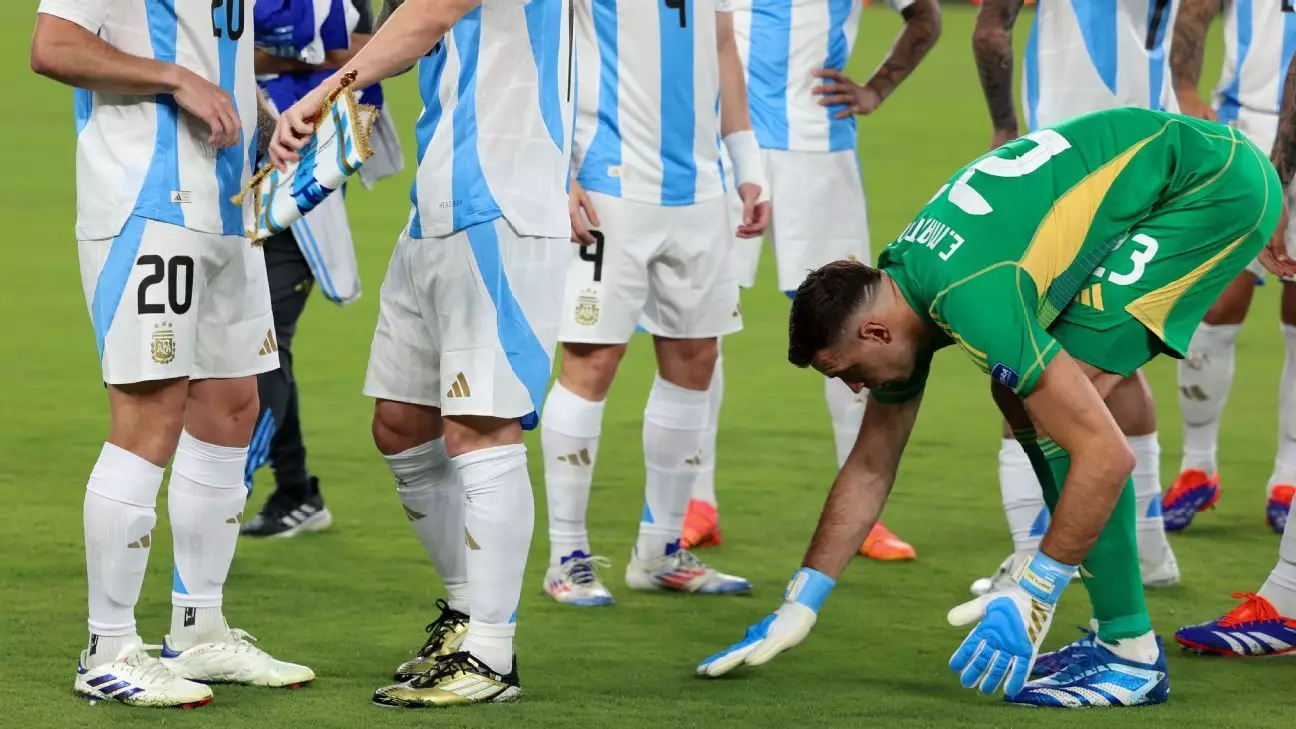The 2026 World Cup is set to take place in North America, featuring an expanded field and matches spread across 16 cities in three different countries. With FIFA aiming to create the perfect pitch for every venue, the organization partnered with turf experts at the University of Tennessee and Michigan State University to ensure the best surfaces for the tournament. This ambitious plan hopes to showcase the best of football while providing players with top-notch playing conditions.
Previous tournaments, such as the Copa América, have faced issues with subpar playing surfaces, leading to criticism from players and coaches alike. Argentina goalkeeper Emiliano Martínez even went as far as to call the grass field at a recent tournament a “disaster.” FIFA is determined to avoid such problems at the 2026 World Cup, with high expectations and demands for flawless playing conditions. The goal is to prevent any distractions or controversies surrounding the quality of the pitch.
With games scheduled to take place in locations with varying climates, such as Mexico and Canada, climate change poses an additional challenge for the turf experts. Different varieties of grass are being considered to ensure that the playing surfaces can withstand the environmental conditions. Turfgrass breeding efforts over the years have led to the development of grass varieties that are more tolerant to heat, drought, disease, and wear. Both the University of Tennessee and Michigan State University are actively working on innovative solutions to address these challenges.
Tennessee’s shade house and Michigan State’s asphalt testing area are just some examples of the research and preparation being done to ensure high-quality playing surfaces for the World Cup. By mimicking indoor and outdoor stadium environments, the experts can test how different surfaces respond to ball bounces and player movements. The goal is to create a playing surface that is consistent, safe, and conducive to exciting matches.
As the 2026 World Cup approaches, the focus is on providing players and fans with an exceptional football experience. By partnering with leading turf experts and conducting thorough research, FIFA aims to avoid any playing surface controversies that have plagued past tournaments. The ultimate goal is for the quality of the pitch to enhance the overall spectacle of the World Cup, allowing the focus to remain on the game itself. With ongoing efforts and advancements in turf technology, the 2026 World Cup promises to be a showcase of world-class football on world-class playing surfaces.

